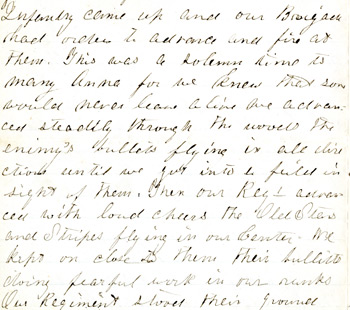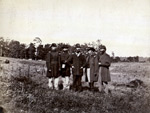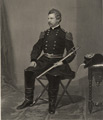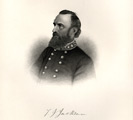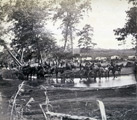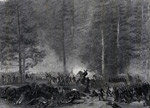Click Center Image for Full Size Picture
Cedar Mountain lies east of the Blue Ridge Mountains in Culpeper County, Virginia. Also known as Slaughter's Mountain or Cedar Run, it was the location of the first battle of the Northern Virginia Campaign (June-September 1862) on August 9, 1862.
In early August, Union Major General John Pope and the fourteen thousand men of the newly-formed Army of Virginia began their offensive into Culpeper County. They hoped to capture the strategic railroad junction at Gordonsville where the Orange and Alexandria Railroad crossed the Virginia Central Railroad. On August 9 at Cedar Mountain, Union forces commanded by Major General Nathaniel P. Banks attacked Major General Thomas J. "Stonewall" Jackson's Confederate forces that had been sent by General Robert E. Lee to stop the Union advance into central Virginia. Lee placed almost half his command under Jackson in the hopes he could free the Shenandoah in preparation for the Army of Northern Virginia's advance into Maryland. Though the Union gained an early advantage, a swift counterattack by Confederate Lieutenant General Ambrose P. Hill's reinforcements drove the Union back, resulting in a Confederate victory. Lee would use the success at Cedar Mountain to build momentum for future offensive operations in Northern Virginia.
Culpeper Court House, Virginia.
The Battle of Cedar Mountain was the first sustained military action involving the 10th Maine. Abial Edwards participated in the battle with Company K, which sustained light casualties compared to some of the other units in the regiment. A week after the battle, on August 16, Edwards wrote to Anna describing the long march towards the Rapidan River and the battle that followed. He told how the enemy's bullets seemed to fly in every direction—Edwards's ear was grazed by a bullet that had hit another soldier in the face, another bullet passed through the top of his cap, and buck shot tore his coat sleeve. Of the 1,630 men in Abial's Brigade, 811 survived uninjured.
Edwards wrote that the Confederates did not bury their dead although they held the field of battle that night. Instead, they appeared to Edwards to have been "stripping our [Union] dead Officers of everything they had on."
